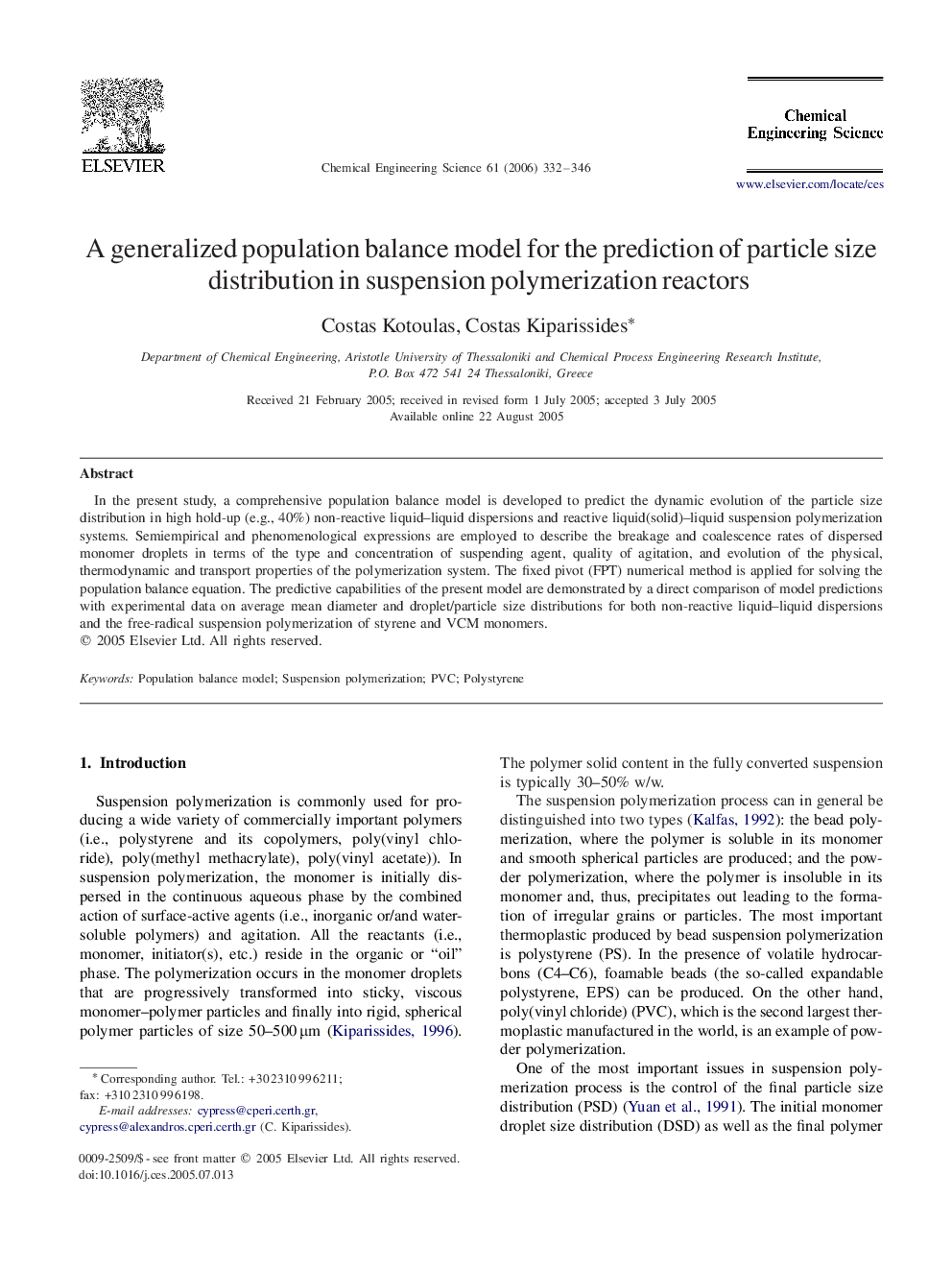| Article ID | Journal | Published Year | Pages | File Type |
|---|---|---|---|---|
| 160037 | Chemical Engineering Science | 2006 | 15 Pages |
In the present study, a comprehensive population balance model is developed to predict the dynamic evolution of the particle size distribution in high hold-up (e.g., 40%) non-reactive liquid–liquid dispersions and reactive liquid(solid)–liquid suspension polymerization systems. Semiempirical and phenomenological expressions are employed to describe the breakage and coalescence rates of dispersed monomer droplets in terms of the type and concentration of suspending agent, quality of agitation, and evolution of the physical, thermodynamic and transport properties of the polymerization system. The fixed pivot (FPT) numerical method is applied for solving the population balance equation. The predictive capabilities of the present model are demonstrated by a direct comparison of model predictions with experimental data on average mean diameter and droplet/particle size distributions for both non-reactive liquid–liquid dispersions and the free-radical suspension polymerization of styrene and VCM monomers.
